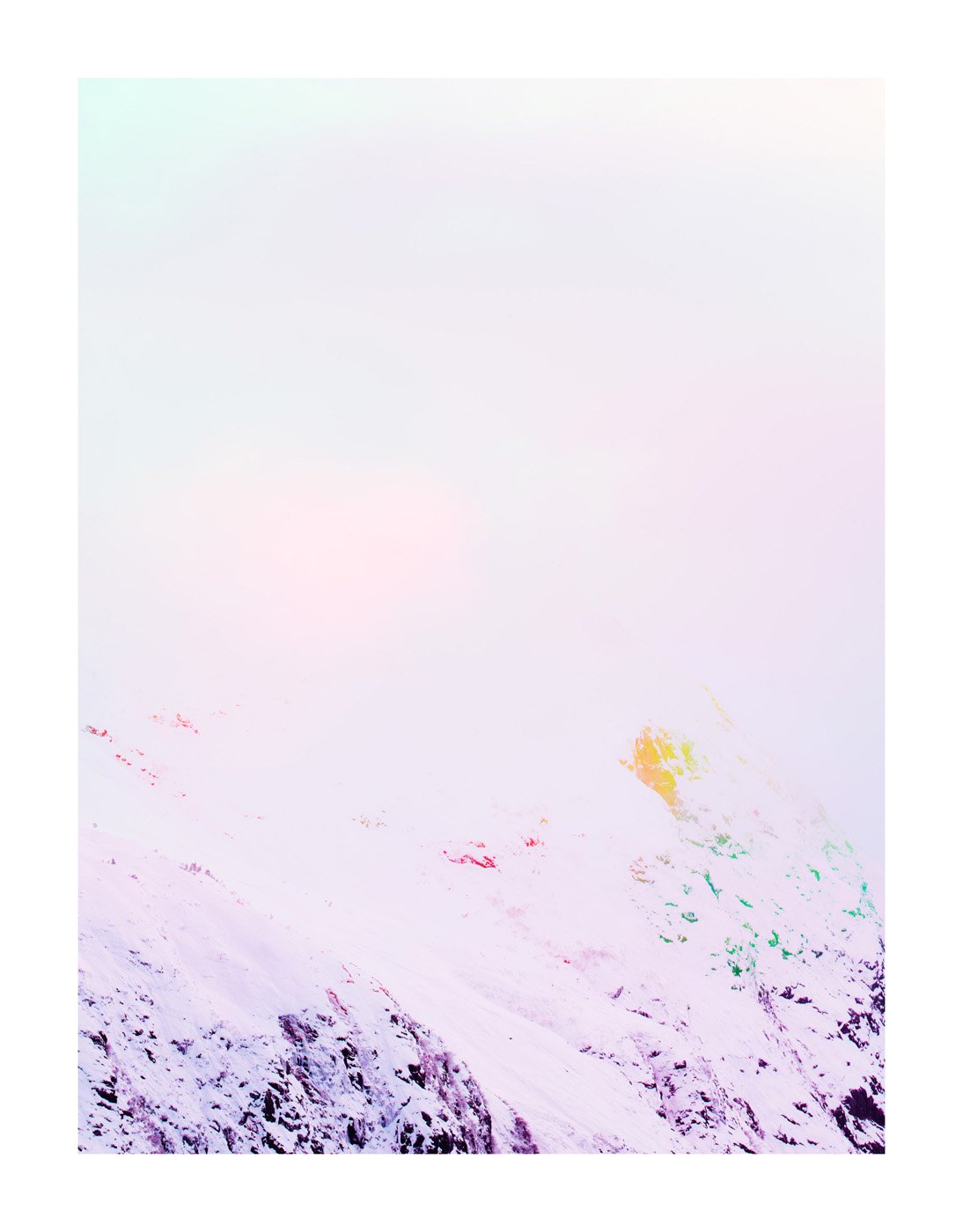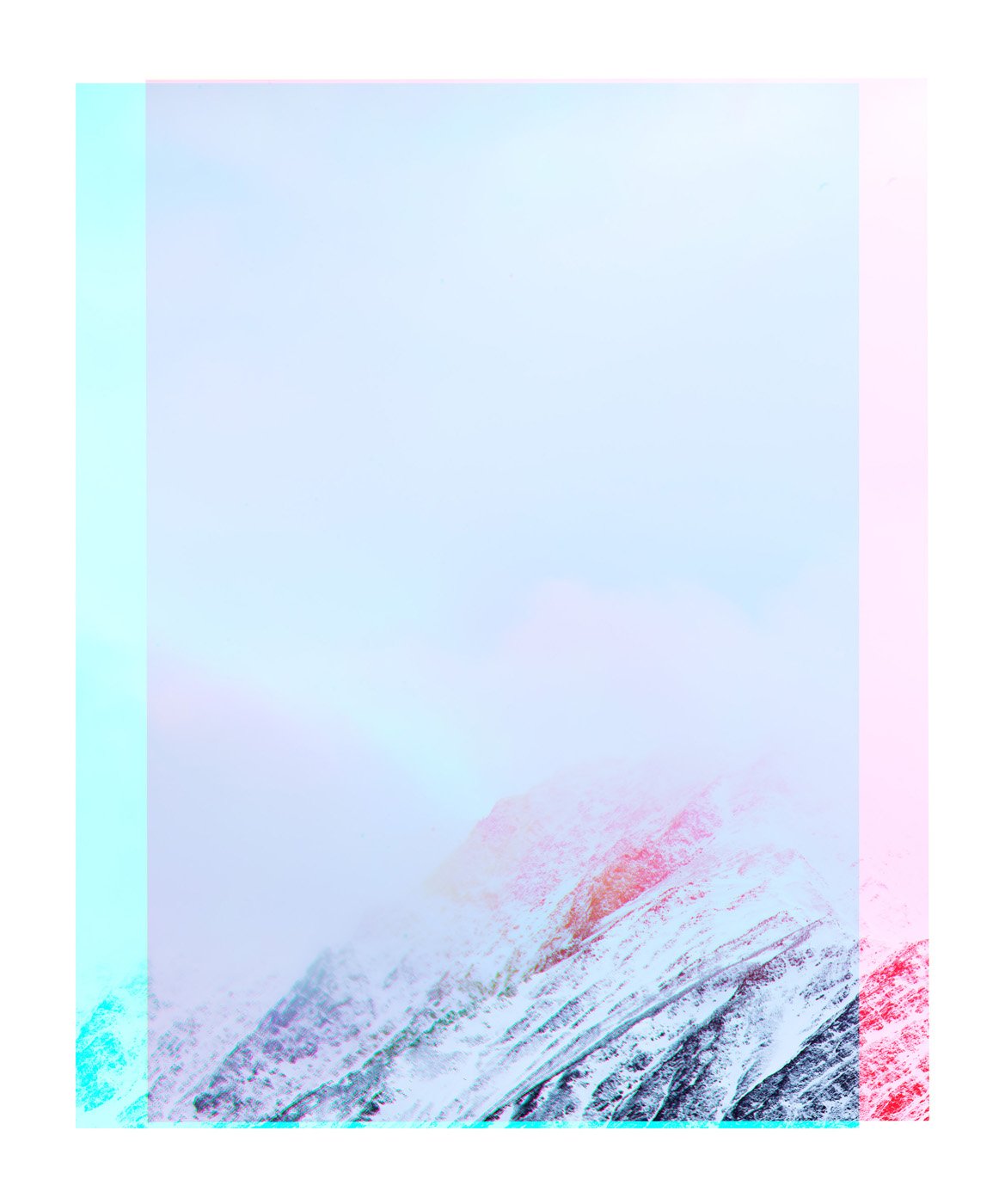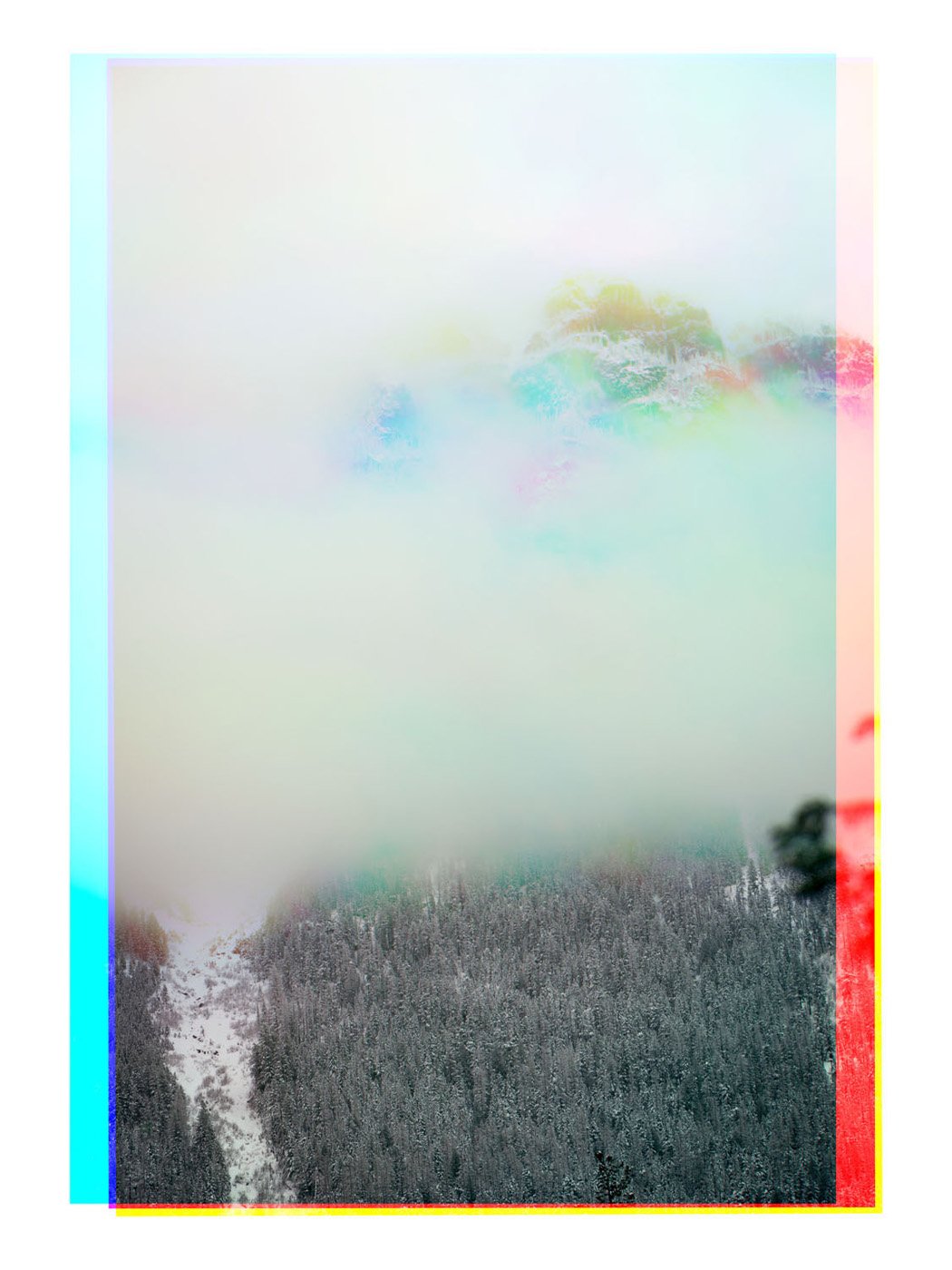




-
My research examines the importance of time to our perception of the landscape while also considering the relationship of people to their environments. My video and photographic series, “The Color of Memory,” observes the elasticity of time and color, constructing a more arbitrary relationship between the two. The rearranging of color channels in multiple layered images illustrate the fracturing of our perception of color as a fixed entity and how time alters our understanding of the landscape. Misaligning the color plates within the images performs the same function as a prism when refracting white light into the component colors, creating colorful ghosting where movement occurs. “The Color of Memory” contains distinct sections, consisting of still photographs and both single channel and multiple channel video installations. The fourth section, “The Color of Memory: The Color of White,” examines the shifting colors across a white landscape. The snow-covered landscape clarifies how light translates the experience of movement to the displacement of time.
The Color of White begins to look at the world through transcendentalism. The transcendentalists and Kant before sought new ways of knowledge of the world. Kant wanted to critique how we achieved understanding creating a Transcendental Philosophy. The Color of White seeks a direct connection with the environment through weather and time, encouraging the viewer to reexamine their manner of knowing about the world before them.
I think of the camera as a tool to record time. The camera has the power to arrest the motion of the world, changing the way we interact with our natural environments. Through the accumulation of images: information becomes distorted, time and the archive {mis}shape our understanding and memory, and repeated exposures to the awe- inspiring fuel a layered experience when looking at the world. I aim to summon the viewer’s romanticized memory of the landscapes and challenge them to understand the environments in which they live.
